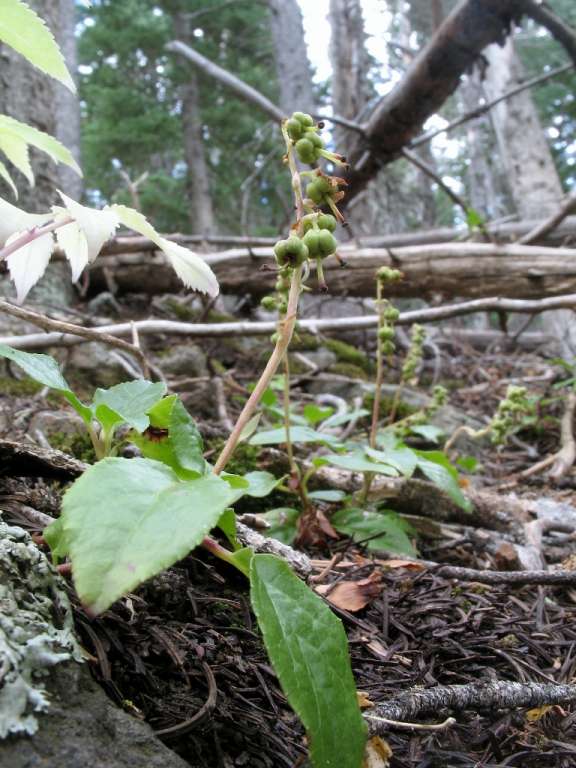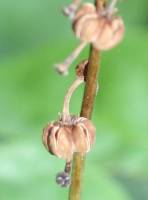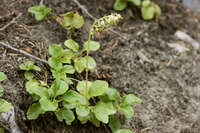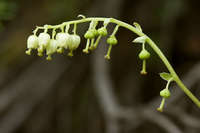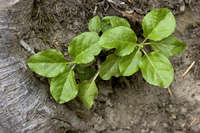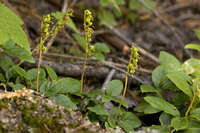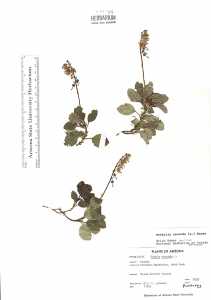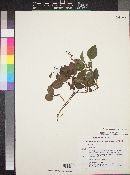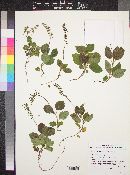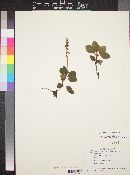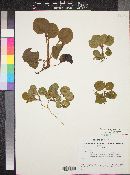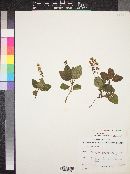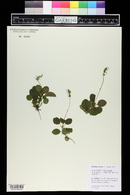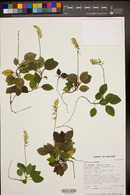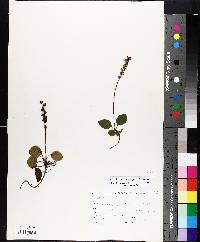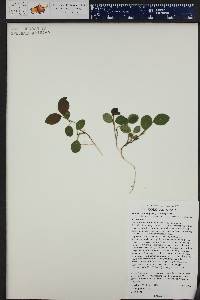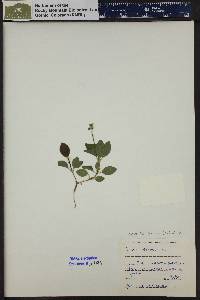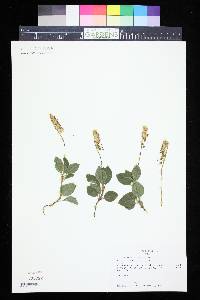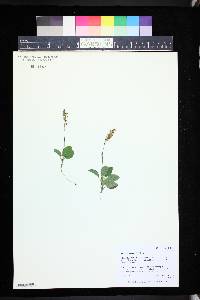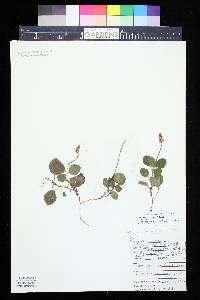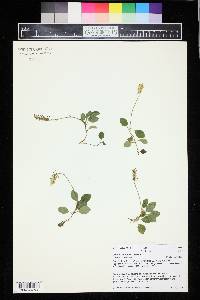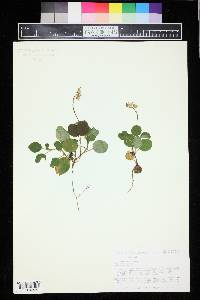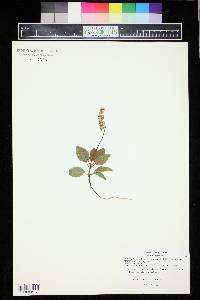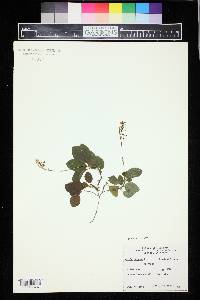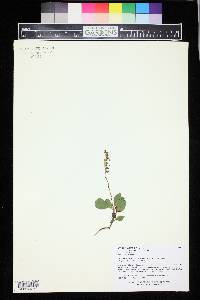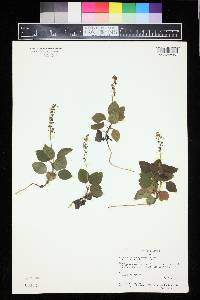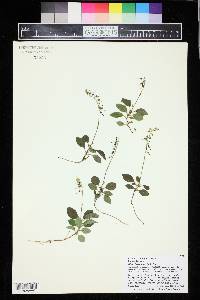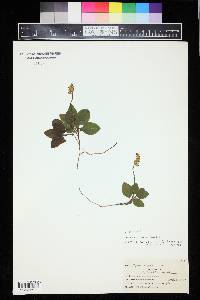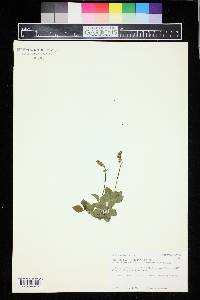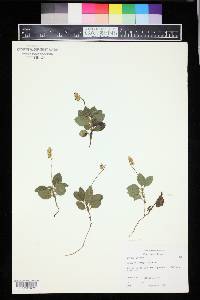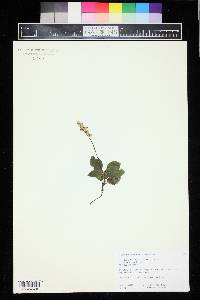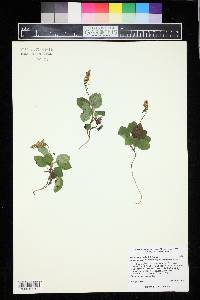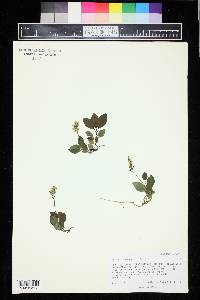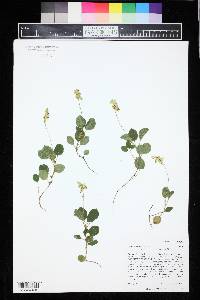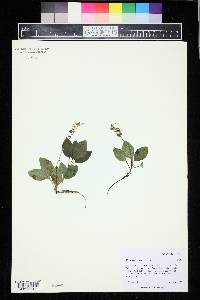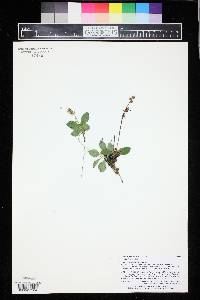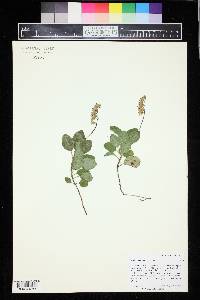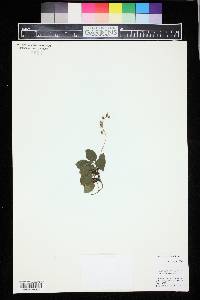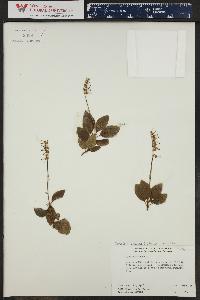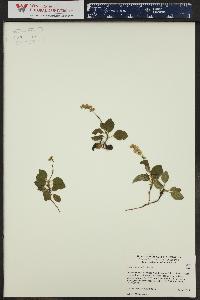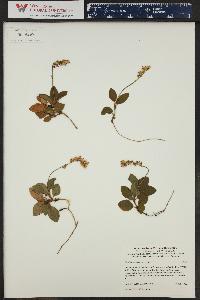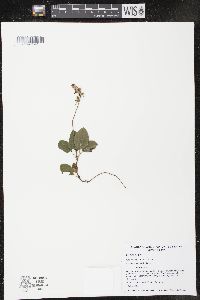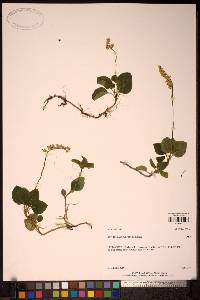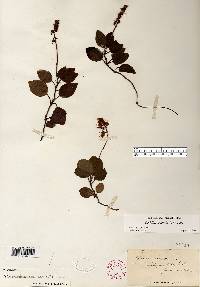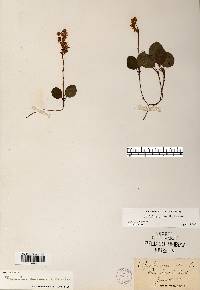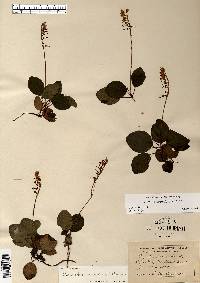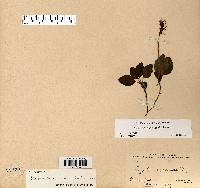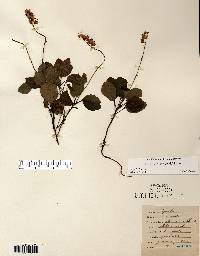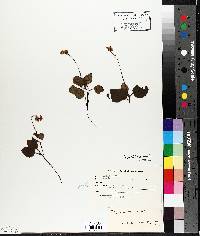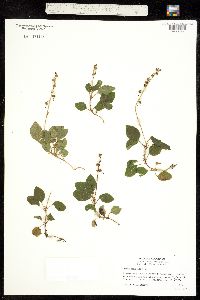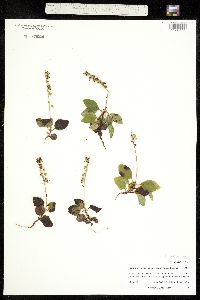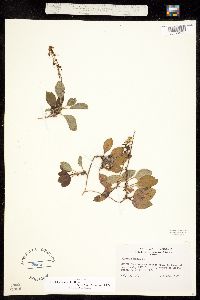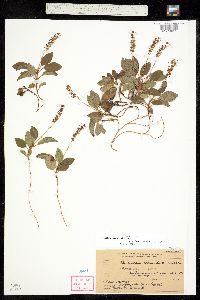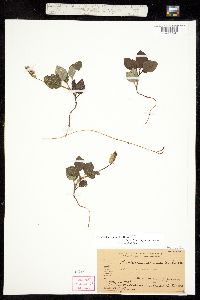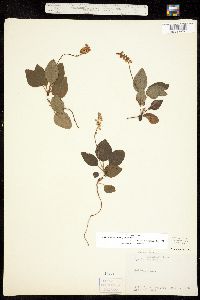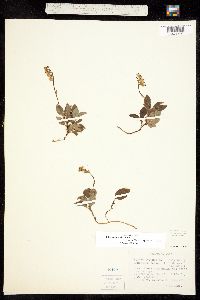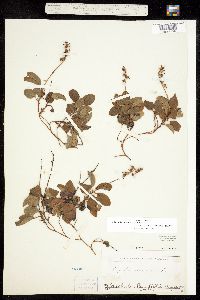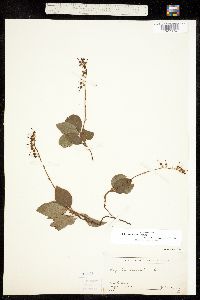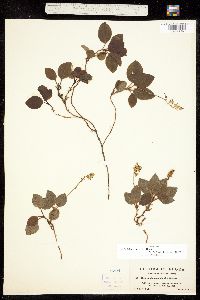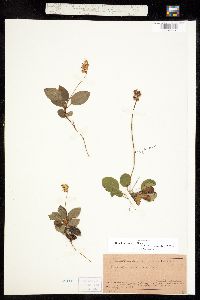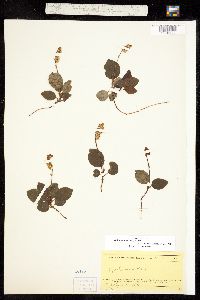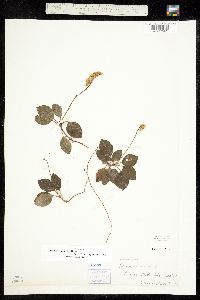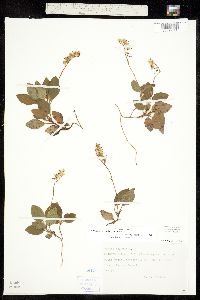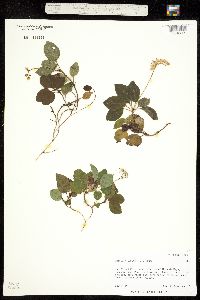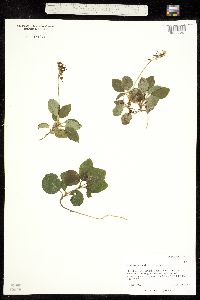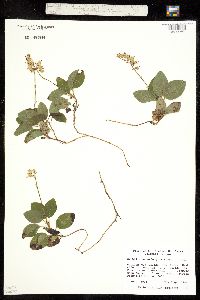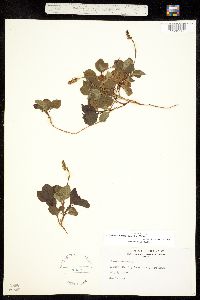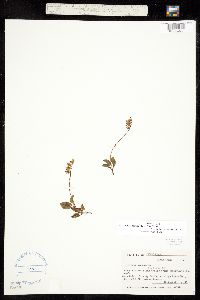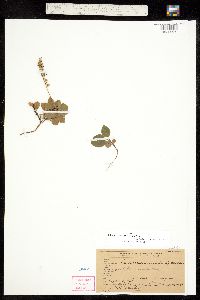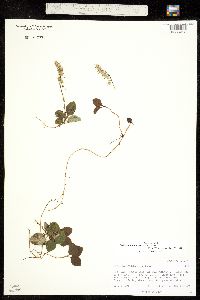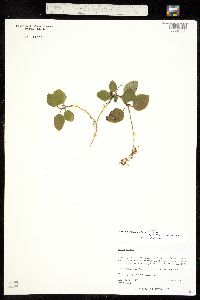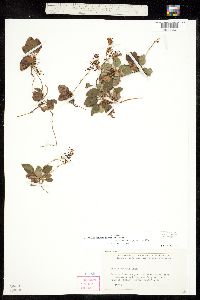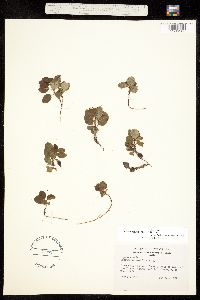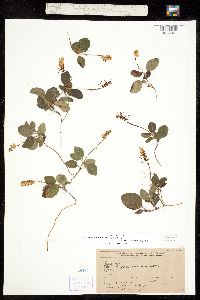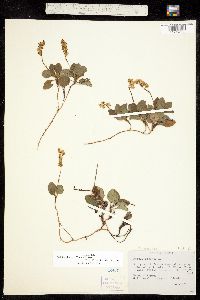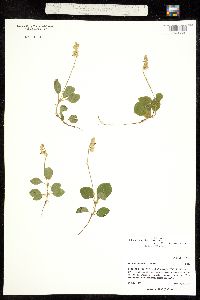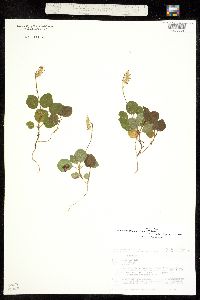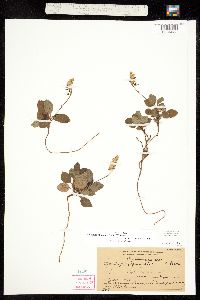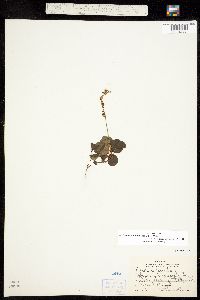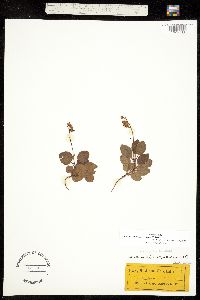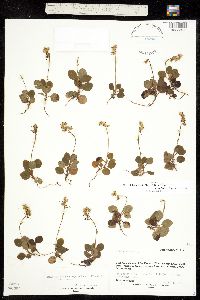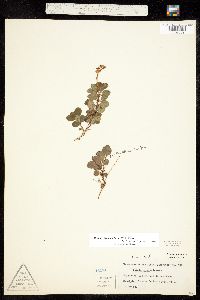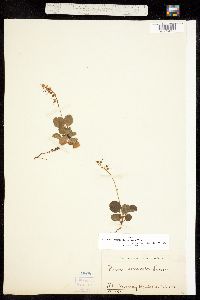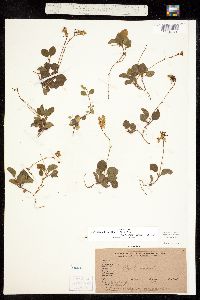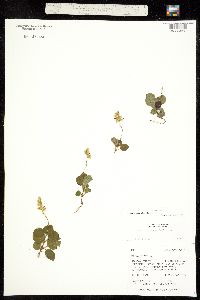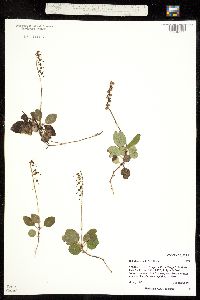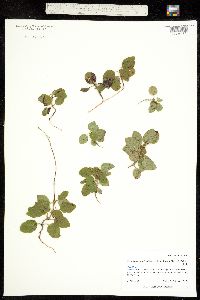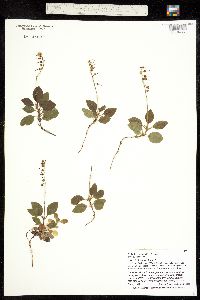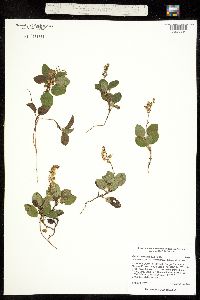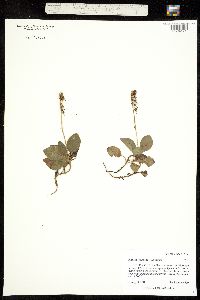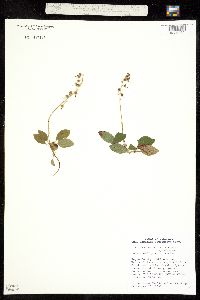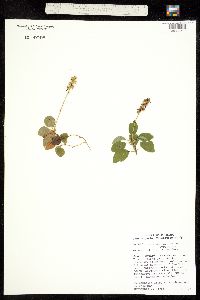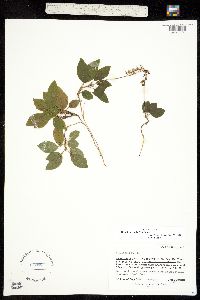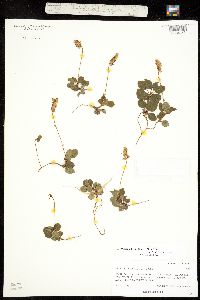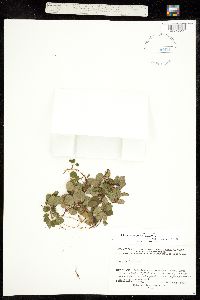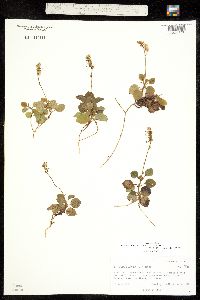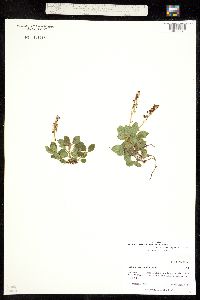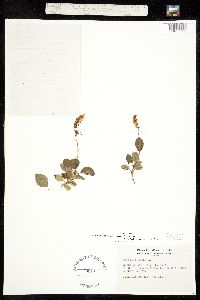
|
|
|
|
Family: Ericaceae
Sidebells, more...sidebells wintergreen, oneside wintergreen
[Actinocyclus secundus (L.) Klotzsch, moreActinocyclus secundus var. elatior Lange, Orthilia secunda subsp. obtusata (Turcz.) Böcher, Orthilia secunda var. obtusata (Turcz.) House, Pyrola secunda L., Pyrola secunda f. eucycla Fernald, Pyrola secunda subsp. obtusata (Turcz.) Hultén, Pyrola secunda subsp. secunda , Pyrola secunda var. obtusata Turcz., Ramischia elatior Rydb., Ramischia secunda (L.) Garcke] |
Plants rhizomatous, 1.2-2.7 (-3.3) dm. Leaves: petiole 4-20 mm, channeled adaxially, glabrous; blade dull and light green abaxially, shiny and green adaxially, (10-)20-47(-58) × 7-28(-35) mm, base rounded to acute, apex rounded to acute. Inflorescences (2-)3-29-flowered; peduncle 10-20(-25) cm, peduncular bracts absent or 2-7, subulate to narrowly or broadly lanceolate, 3-9 × 1-2 mm, membranous, margins entire or erose-denticulate; inflorescence bracts subulate to lanceolate-ovate or narrowly ovate, ca. as long as pedicels they subtend, 4-9 × 0.4-1.8 mm, herbaceous. Pedicels (1-)3-7(-9) mm. Flowers: calyx lobes appressed or spreading in fruit, entirely green or margins hyaline to white or pinkish, 0.5-1.5 × 0.5-1.3 mm, margins erose-denticulate, sometimes obscurely so, apex rounded to obtuse; petals broadly ovate, 4.5-6 × 3-4 mm, margins erose-denticulate or irregularly toothed; stamens 4-8 mm; filament base 0.1-0.3 mm wide; anthers 1.2-1.8 mm, thecae tan or light brown, pores 0.2-0.5 × 0.2-0.4 mm; ovary smooth; style 3-5(-7) mm; stigma 1.4-2 mm wide. Capsules depressed-globose, 3-5 × 4-6 mm. 2n = 38. Flowering Jun-Aug. Dry to moist, coniferous, mixed, and deciduous forests, bogs, arctic and alpine tundra; 10-3200 m; Greenland; St. Pierre and Miquelon; Alta., B.C., Man., N.B., Nfld. and Labr., N.W.T., N.S., Nunavut, Ont., P.E.I., Que., Sask., Yukon; Alaska, Ariz., Calif., Colo., Conn., Del., Idaho, Ill., Ind., Iowa, Maine, Md., Mass., Mich., Minn., Mont., Nebr., Nev., N.H., N.J., N.Mex., N.Y., N.Dak., Ohio, Oreg., Pa., R.I., S.Dak., Utah, Vt., Va., Wash., Wis., Wyo.; Mexico; Central America (Guatemala); Eurasia. Plants in open, alpine and arctic habitats often have leaf blades orbiculate to orbiculate-ovate, 10-20 mm, apices obtuse, anthers ca. 1 mm, and styles 3-4.5 mm, and have been called Orthilia secunda subsp. obtusata. E. Haber (1972) concluded that these characters vary too freely among populations to warrant distinction. The Southern Carrier of British Columbia made a decoction from the roots, which they used as an eyewash (D. E. Moerman 1998).
Plant: Perennial rhizomatous, scapose herbs or sub-shrubs Leaves: alternate, simple, generally leathery, clustered in false yearly whorls; blades ovate, elliptic, to obovate (1-)2-4(-6) cm long; margins entire to crenate; petioles generally shorter than blades SCAPES: bracteate, under 20 cm tall, the bracts lanceolate to narrowly oblong or obovate, generally longer than the pedicels INFLORESCENCE: inflorescence a one-sided drooping raceme, minutely papillate Flowers: drooping, actinomorphic, bell-like; sepals ovate, generally about 1 mm long, the tips blunt, the margins finely erose; petals greenish to cream-white, (4-)4.5-5.5(-6) mm long, with two basal tubercles on upper side; filaments narrow; anther sacs minutely papillate, 1.3-2.0 mm long, without tubes, the sacs open at the ends; pollen grains single, ellipsoid; disk present; style straight, exserted; stigma peltate, with 5 small marginal lobes Fruit: FRUITS 5-locular drooping capsules with fibers connecting opened valves; fruiting axis becomes erect at maturity NOTES: Coniferous forest: Apache, Coconino, Graham, Greenlee, Pima- cos.; 2100-3400 m (7000-11000 ft); Jul-Aug; widespread in N. Hemisphere; across Canada s to CA and NM, ne to SD and in ne states, also in Mex. and Guatemala. REFERENCES: Haber, Erich. 1992. Pyrolaceae. Ariz.-Nev. Acad. Sci. 26(1)2. General: Perennial, evergreen, herbaceous to subshrub, 5-20 cm tall; stems usually solitary; herbage glabrous; rhizomes long, slender. Leaves: Cauline, but basally disposed, alternate, sub-opposite or sometimes in pseudo-whorls of 3, elliptic, broadly ovate, or sub-rotund, glabrous, leathery, margins entire to finely crenate-serrate, base obtuse to rounded, apex acute; petiole mostly 0.5-1.5 cm long. Flowers: Solitary, nodding, fragrant, arising on a peduncle 3-9 cm long, often well above the leaves; sepals 5, ovate, 2-3.5 mm long, greenish white to yellowish; petals 5, ovate- lanceolate, 7-12 mm long, white or tinged with pink; stamens 10, with anthers opening apically by circular pores; style straight, 2-4 mm long, the stigma peltate, 5-lobed; flowers July-August. Fruits: Loculicidal capsule, globose, 4-5 mm in diameter; seeds numerous, minute. Ecology: Coniferous forests; 2100-3400 m (7000-11000 ft); Apache, Coconino, Graham, Greenlee, and Pima counties; Canada, northeastern, north-central, western, and southwestern U.S. Notes: This species can resemble Vaccinium vegetatively; however it has fewer, thicker, basally disposed leaves, whereas Vaccinium has more numerous, papery, obviously cauline leaves. Editor: Springer et al. 2008 Lvs elliptic to broadly ovate or subrotund, 1.5-4 cm, obtuse or rounded, entire to crenate-serrate, obtuse or rounded at base, often separated by conspicuous internodes; scape 1-2 dm; raceme crowded, secund; sep semi-orbicular to ovate, 0.5-1 mm; pet white or greenish, 5 mm; anthers 1.5-2 mm, truncate, opening by large pores, rounded at base; style elongate, exsert at anthesis; 2n=38. Moist woods and mossy bogs; circumboreal, in Amer. s. to N.J., Md., Ind., Minn., and N.M. Differs from other spp. of Pyrola in having a 10-lobed, hypogynous disk, basally bituberculate pet, and simple pollen grains (not in tetrads), and perhaps best considered to form a distinct genus, Orthilia secunda (L.) House. (Ramischia s.) Gleason, Henry A. & Cronquist, Arthur J. 1991. Manual of vascular plants of northeastern United States and adjacent Canada. lxxv + 910 pp. ©The New York Botanical Garden. All rights reserved. Used by permission. From Flora of Indiana (1940) by Charles C. Deam This species has been reported from Lake, Porter, and Steuben Counties. There are specimens from Lake and Porter Counties, collected by Nieuwland, now deposited in the herbarium of the University of Notre Dame. The Lake County specimen was collected at Miller, June 24, 1916; the Porter County specimen was collected at Mineral Springs June 14, 1911. The leaves of these specimens are narrowed at the apex instead of rounded; the secund racemes contain more than 10 flowers; the styles are straight; the basal cauline bracts are involute and lanceolate-acuminate. This species reaches the southern limit of its range in northern Indiana. The Steuben County report may have been correct, but the report from Monroe County by Dudley may safely be disregarded. …… Indiana Coefficient of Conservatism: C = 10 Wetland Indicator Status: FAC |
|
|
|
This project was made possible in part by the Institute of Museum and Library Services [MG-70-19-0057-19].
Powered by Symbiota

